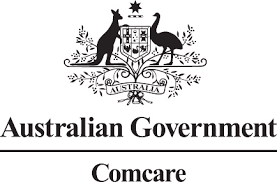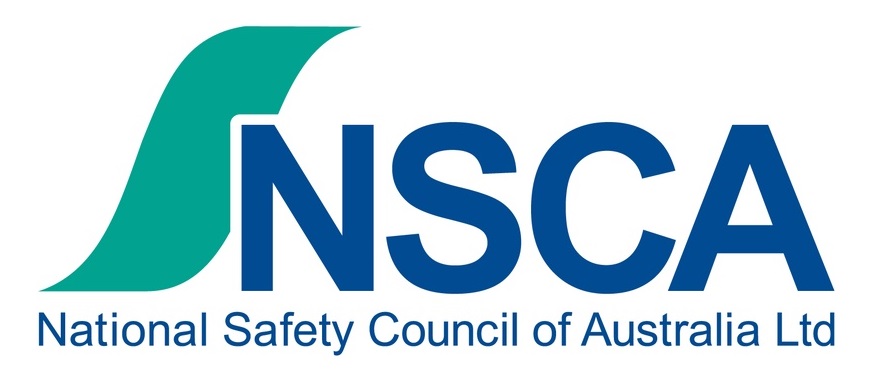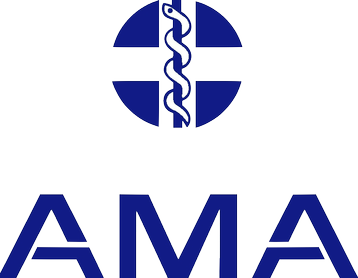Panelbeaters & Spraypainters Related Health Surveillance Medicals
Isocyanate Health Surveillance
Employees Health provide isocyanate health monitoring onsite and at our dedicated clinics. We conduct these health assessments, as per WorkSafe requirements, for workers exposed to isocyanates in the workplace.
Due to the health issues associated with isocyanate exposure, there is legislation governed by Worksafe requiring persons conducting a business or undertaking (PCBU) to initiate a Health Surveillance (monitoring) program often referred to as spray painter health monitoring.
We work in accordance with state legislation






Isocyanate Health Monitoring - How Often?
The https://www.safework.nsw.gov.au/about-us/safework-nsw-regulatory-priorities-2023 Regulatory Guidelines, Safework should be followed when establishing the regularity of health surveillance. There is also their more recent guide to handling isocynates that recommends the following:
- 6 monthly, and where monitoring after 12 months shows no adverse health effects, the appointed medical practitioner may choose to carry out annual monitoring
Code of Practice
Safe Work Australia reviewed the model Code Code of Practice for Spray Painting and Powder Coating .For all automotive body repair employers and paint and panel workshops, there is a WorkSafe responsibility to initiate an isocyanate Health Surveillance program to minimise the risk of permanent health damage to their spray painters.
Isocyanate Health Risks
The greatest risks are from inhaling vapours, fine droplets (aerosols) and dusts containing Isocyanates, as they irritate the linings of the nose, throat, lungs and eyes. The health effects include:
- occupational asthma
- irritation of the skin (dermatitis)
- irriation of the mucous membranes (eyes, nose, and throat)
- hypersensitivity
- pneumonitis and
- chest tightness.
Isocyanates include compounds also classified as potential human carcinogens (cancer causing compounds) and are known to cause cancer in animals.
Who is Exposed to Isocyanates?
Paints, varnishes and epoxy solvents now often contain a family of highly reactive chemicals known as isocyanates.
Jobs that often involve exposure to isocyanates include:
- painting and powder coating
- blowing foam insulation
- manufacture and thermal degradation of many polyurethane products such as polyurethane foam, insulation materials,surface coatings, car seats, furniture, foam mattresses, under-carpet padding, packaging materials, shoes, laminated fabrics, polyurethane rubber, and adhesives.
Paint Fumes Safety Guide
Workers in these areas may encounter more health hazards than they realise.
Crucial safety considerations may also go overlooked. Here’s a closer look at the health risks paint fumes pose and how to mitigate them.
The most prominent health risk associated with paint fumes is the presence of carcinogens, chemicals that can cause cancer. For example, some paints contain benzene, a quickly evaporating liquid that causes leukemia. Manufacturing workers spending long hours around paint containing benzene may breathe it in, putting them at risk of cancer.
Apart from carcinogens, many paints contain other volatile organic compounds (VOCs). Toluene, acetone and formaldehyde are commonly used as solvents, sometimes even as the primary liquid. Breathing in these compounds can cause damage to the liver, kidneys and central nervous system, especially over long-term exposure.
Since painting processes in manufacturing are typically contained, indoor operations, the risks of inhaling these toxins are higher. The Environmental Protection Agency (EPA) says VOC concentrations are up to 10 times higher indoors than outdoors. Staying in these areas for extended periods could put workers at significant risk of inhaling these dangerous compounds.
Employees who have allergies to certain chemicals could be at even greater risk. Many common compounds in industrial paints can trigger reactions, which could be dangerous depending on the severity of workers’ allergies. Even people without strong allergies could develop responses to some VOCs with enough exposure.
For example, studies have found that high formaldehyde levels after painting can cause hyper-responsiveness in the lungs, making them more sensitive to airborne contaminants. If employees develop this and keep working, they could start to react to airborne VOCs more dramatically. They could have trouble breathing, even to the point of a medical emergency.
These concerns are even greater with people who have asthma. Chemicals like formaldehyde and acetaldehyde, a common paint binder, can trigger asthma attacks, resulting in severe consequences. Some studies even suggest that exposure to these compounds could lead to the development of asthma or allergies.
Apart from carcinogens, many paints contain other volatile organic compounds (VOCs). Toluene, acetone and formaldehyde are commonly used as solvents, sometimes even as the primary liquid. Breathing in these compounds can cause damage to the liver, kidneys and central nervous system, especially over long-term exposure.
Since painting processes in manufacturing are typically contained, indoor operations, the risks of inhaling these toxins are higher. The Environmental Protection Agency (EPA) says VOC concentrations are up to 10 times higher indoors than outdoors. Staying in these areas for extended periods could put workers at significant risk of inhaling these dangerous compounds.
In addition to these more severe issues, paint fumes can cause several short-term health problems. These may not endanger workers but still cause discomfort and injury. Even if employees can work through these issues, they could hamper their performance and affect their overall health.
The most common short-term side effects of VOC exposure are eye, nose and throat irritation. If these persist, they could lead to trouble breathing. Similar common side effects include headaches, nausea and feeling lightheaded.
Less common but still possible short-term health issues include allergic skin reactions, fatigue, dizziness and vomiting. If workers are around paint fumes over extended periods without proper protection, these side effects may be more likely.
While the health risks associated with paint fumes are concerning, they’re avoidable. Manufacturers can take many steps to ensure their workers don’t suffer any side effects from working with paints. Here are a few of the most important precautions to follow.
By far, the most crucial safety consideration with industrial paints is to ensure proper ventilation. OSHA recommends workplaces use HVAC system filters with a minimum efficiency reporting value of 13 or higher to remove contaminants. Ventilation systems should also pull air in from outside, far from the building’s exhaust, to prevent recirculating any airborne VOCs.
Manufacturers should also require all workers in painting operations to wear protective gear, including face masks and eye protection. N95 respirators and other close-fitting, heavily filtered masks should be the standard. Safety goggles should likewise fit tightly to avoid smaller particles from slipping in. Painters should also wear coveralls and gloves to prevent skin exposure.
Some manufacturers may consider using powder coating instead of traditional paints. Polymer powder is inert and free of toxins, making it safer to work with. Workers using polymer coatings should still follow safety precautions like ensuring ventilation and wearing protective gear.
Alternatively, manufacturers may choose to work with VOC-free paint. Water-based paints contain fewer or no VOCs, making them safer, although they may not perform the same. It’s also important to note that VOC-free paint still emits chemical gases, so other precautions are necessary.
Spraypainter Safety
Exposure to hazardous chemicals is a significant risk in spray painting and powder coating activities including during preparation (preparing surfaces, tinting, mixing and pouring paints), storage, clean-up and disposal. The hazardous chemicals that workers may be exposed to include paints, solvents, powders, lacquers, paint strippers, adhesives, surface preparation products, rust converters and rust removers.
Worksafe can review your Health Surveillance program to ensure you are meeting your WorkSafe Isocyanate health surveillance requirements.
Risk to Spraypainters
Those at greatest risk include those who work with spraying isocyanates and volatile isocyanates such as tolulene diisocyanate (TDI).
Three types of workplaces stand out as having the highest risk of isocyanate exposure in Australia
- workplaces where isocyanates are mixed with a resin and then sprayed to produce an insulating foam – droplets containing isocyanates are the main hazard because they can be inhaled and absorbed by the body
- workplaces where TDI is mixed with resins in the manufacture of foam – isocyanate vapours released during mixing and curing are the main hazard, and
- workplaces where two-part polyurethane paints are sprayed, most typically in the painting of motor vehicles.
Occupational Exposure as a Painter: Understanding Paint Composition and Hazards
Occupational exposure in the painting industry poses significant health risks, including increased susceptibility to lung cancer, mesothelioma, bladder cancer, and potentially childhood leukaemia. Protective measures, including the use of appropriate PPE, are crucial in minimizing these risks.
Painters face substantial risks, not only in direct genetic damage but also in systemic and immunological alterations, emphasizing the critical need for stringent protective measures and continued research to mitigate these adverse effects.
Paints are complex mixtures of various substances designed to provide colour, durability, and protective properties to surfaces. They consist of finely divided pigment particles suspended in a liquid medium composed of binders, volatile solvents or water, and additives. The composition of paints varies based on colour, durability, and specific requirements. Here are the main components of paints and their potential hazards to workers.
Pigments: These provide colour, opacity, and other physical properties to the paint. Common pigments include titanium dioxide (rutile and anatase forms) for white paint and carbon black for black paint. In the past, azo pigments containing 3,3′-dichlorobenzidine were used, which had low toxicity.
Fillers: Fillers are used to improve the performance of paint layers. Asbestos, once common, has been largely phased out due to health concerns. Special attention is given to hazardous pigments, especially chromate- or lead-based substances, which are being replaced with less toxic alternatives despite lower performance.
Natural Resins and Oils: Historically, natural substances like shellac, rosin, and various plant and fish oils were used as binders.
Synthetic Resins: Modern paints primarily use synthetic resins such as cellulose-based resins, phenolic, alkyd, vinyl, acrylic, and polyurethane resins. These provide film hardness, gloss, adhesion, and resistance to environmental factors.
Solvents like toluene, xylene, aliphatic compounds, ketones, alcohols, esters, and glycol ethers are used to dissolve other components and improve application. Water-based paints have reduced the need for hazardous solvents.
Surfactants and Dispersing Additives: These control flow, wetting, and leveling properties. They include various chemicals such as polyurethanes, polyamides, and oleic acid.
- Driers (Siccatives): Metal salts like cobalt, calcium, and zinc are used as catalysts in air-drying and heat-cure systems.
- Rheological Additives: These influence coating performance during application and storage. Examples include methyl cellulose, polyvinyl alcohol, and polyacrylamides.
- Plasticisers: These enhance flexibility and are added in small quantities.
- Biocides: Added to prevent microbial contamination, examples include isothiazolinones and chloroacetamide.
- Anti-Skinning Agents: Oximes and phenol derivatives prevent skin formation on the paint’s surface.
- Corrosion Inhibitors: Inorganic and organic inhibitors like zinc, chromium, and phosphates protect against corrosion.
- Asbestos: Once used as a filler, asbestos has been phased out due to health risks.
- Nanoparticles: Tiny particles improve paint properties; however, they can agglomerate and become part of the polymer matrix during drying.
Note: It’s crucial for workers in the painting industry to be aware of these components and follow safety protocols, including using appropriate personal protective equipment and working in well-ventilated areas, to minimize exposure to hazardous substances. Additionally, regulatory guidelines and industry standards should be adhered to, promoting the use of safer, low-toxicity alternatives to protect the health and well-being of workers in the field.
What an employer needs to do
The Occupational Health and Safety Act 2011, says that you should provide and maintain a work environment in which your employees are not exposed to hazards. This includes Health surveillance of your staff.
